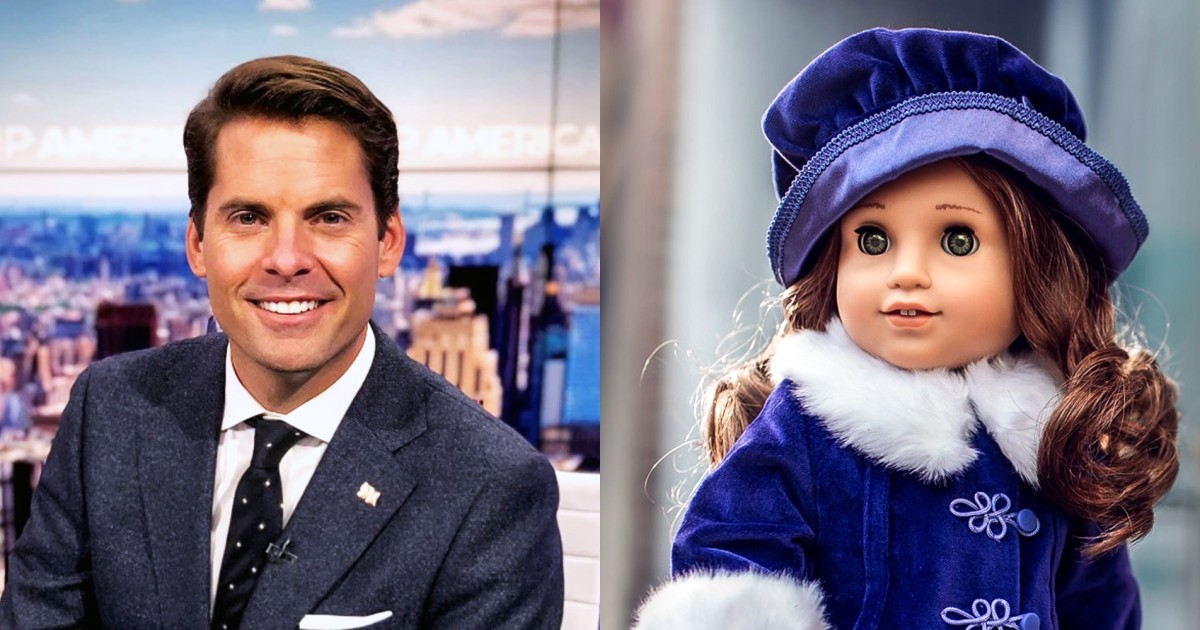Before we start, a caveat: I have never watched Newsmax, and I wouldn’t even know where it lives on cable news. But a clip on social media of one of its anchors, Rob Finnerty, horrified because he couldn’t find a white American Girl doll for his daughter in the store at Rockefeller Center, threw me.
“My daughter is just a cute little 6-year-old white girl — we couldn’t find anybody that looked like my daughter. It was — the whole place, it was, like, wokeified,” Finnerty said during a recent broadcast.
Did he stop to think that perhaps all of the white dolls were sold out at the store? Was going on the American Girl website not an option for him? Surely if he did, his panic would’ve subsided.
“How long has this been going on with American Girls? … It was somewhat of a bizarre experience,” he said.
There is something bizarre here, but it’s not what Finnerty thinks it is.
Did he stop to think that perhaps all of the white dolls were sold out at the store? Was going on the American Girl website not an option for him? Surely if he did, his panic would’ve subsided. In the All Dolls section, you must scroll through almost 20 white dolls before you get to a doll of color.
I also imagine he forgot about the decades that cute, little Black and brown girls could only choose from all-white doll shelves — none of which looked anything like them. Why? Because whiteness was the default.
My daughter, half Puerto Rican and half Salvadoran, was given a blond, blue-eyed Baywatch Barbie for her birthday when she turned 7 about 15 years ago. I was appalled, but my feelings, unlike Finnerty’s outrage, were justified for one main reason: There is no shortage of toys that represent white children. It’s parents of children of color who are left to go the extra mile to seek out dolls, figurines, books and games that portray their children — making sure they don’t grow up feeling left out.
It would be easy to dismiss Finnerty’s comments as ridiculous and what one would expect from a far-right news organization, but it’s more than that. It’s thinly veiled racism and fear.
According to the 2020 census, the United States is more diverse and multiracial than ever. Over 30 million people identify as two or more races today. In 2010, that number was 9 million. People who identify as white alone decreased by 8.6%.
It begs the question: What does an American Girl look like today? Because, going by the numbers, American Girl dolls represent what America looks like at present — not a “wokeified” version, but a real one. It’s “bizarre” that Finnerty seems to have a problem with reality.
American Girl’s ethos is to build girls of strong character and help them reach their full potential. Since its inception, the company has shown a commitment to educating and empowering young girls and reflecting the diversity and gender fluidity that is changing the face of the U.S. The company’s website states that it “has created timeless stories that help bridge the past and present. Each demonstrates how strong women can change the course of history — especially during our country’s most troubling times — with courage, compassion, and resilience.”
Racism in the U.S. has seeped into children’s toy boxes, where one would probably find a plethora of white dolls.
It has paid the price for this. Recently, American Girl has come under renewed attacks because of its controversial new book on body image, meant for ages 10 and up, because it has a section that teaches kids about gender identity and pronouns. But shouldn’t children’s toys — which give them information about how cultures and values — reflect the outside world? Should they not be as diverse as they can be in a changing nation?
Racism in the U.S. has seeped into children’s toy boxes, where one would probably find a plethora of white dolls. This is why the toy industry has pushed for more diverse dolls.
Why is this important, and why should we care?
Let’s look at a series of experiments — known as “the doll test” — done in the 1940s by psychologists Kenneth and Mamie Clark. To study the psychological effects of segregation on Black children, they used four dolls, all the same except for the color, to gauge how the children viewed race. The children (ages 3 to 7) were asked to point out what doll they liked best. Most chose the white doll and saw it as the “good” one.
The Clarks concluded that “prejudice, discrimination, and segregation” embedded a sense of inferiority among children of color and harmed their self-esteem.
No one should want a child to feel that way about themselves, and it’s clear that we still have a long way to go because others have recreated the test in recent years with similar results. If correcting the generations of ingrained self-hate in communities of color means that more dolls of color are available and a white parent can’t find a white doll for their white child in one store, that should not cause outrage.
The Newsmax host’s ignorant and (clearly) exaggerated comments seem to stem from a fear that the white majority in the U.S. is losing its prime pole position. Yet this is the future of the U.S. — a diverse nation whose richness of ideas and perspectives will come through representation and acceptance. It is a future that can’t be stopped by a ridiculous anchor decrying that he can’t find a white doll for his cute white child.
Share your story or advertise with us: Whatsapp: +2347068606071 Email: info@newspotng.com










